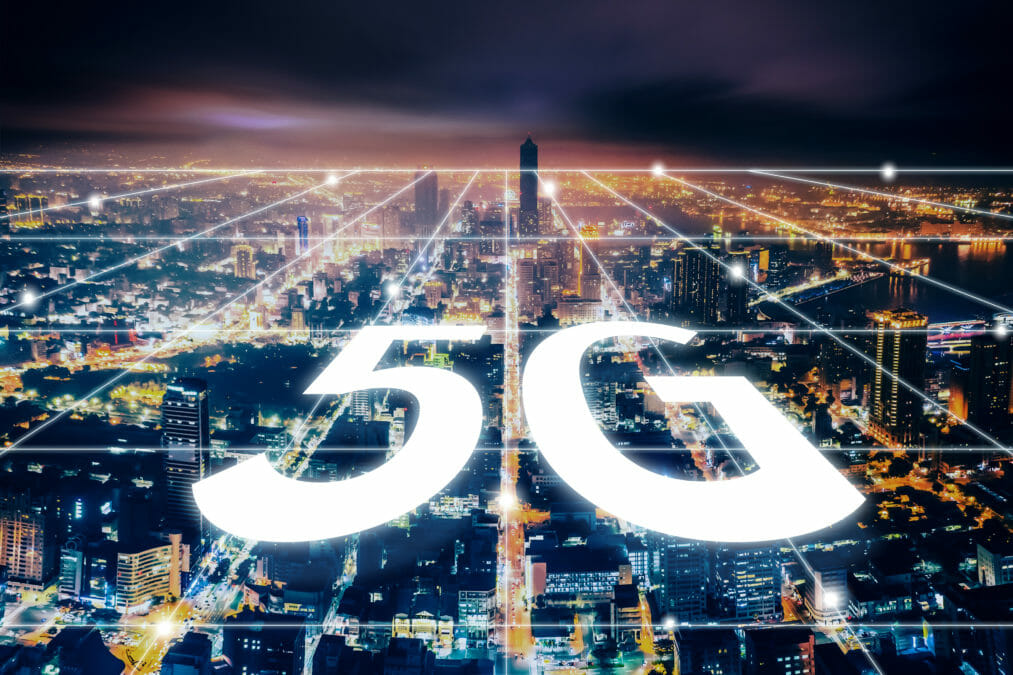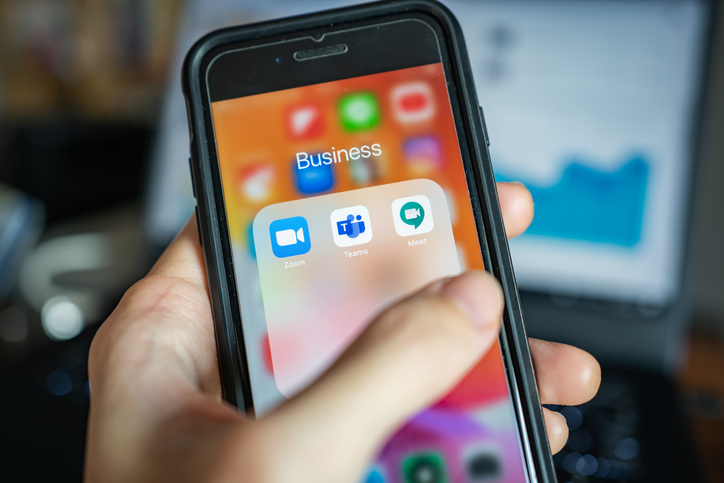5G will enable the use of technology that has not yet been seen in domestic and business spheres. Higher speeds and lower latency will mean that more reliable and varied data can be collected from various points across a supply chain, anything from ehealth monitors to connect cars. The Internet of Things (IoT), meanwhile, will continue to expand by 5G’s promise of faster and more reliable, real-time data.
The massive increase of the IoT is illustrated in research conducted by IDC, which estimates that 90 zettabytes (1 billion terabytes) of data will be created on IoT devices by 2025. To put that in context 175 zettabytes is currently created by all computing worldwide.
A large portion of this data will come from smart device. 5G will enable huge untapped sources of data to become available. It will also enable appliances to work within a connected matrix, allowing for deeper and richer data to become available.
Damien Stephens, associate vice-president, mobility and IoT, Tata Communications, sees the first and most immediate impact of this ever increasing IoT as impacting the motor industry.
McLaren: Digital transformation on and off the track
“As 5G connectivity becomes more ubiquitous, I expect it to have the biggest impact on the road – in connected cars and the wider IoT environment that these vehicles are driving in,” he said.
“This impact will be felt by drivers and car manufacturers, as well as retailers, insurers, delivery companies and other businesses looking to capitalise on the new revenue opportunities that connected cars bring.”
Data collected from cars will help manufacturers more accurately understand a car’s performance; delivery companies can use data to find solutions to make their services more logistically efficient, and insurers can build insurance models around drivers’ behaviour.
5G will also enable these companies to do this in real-time if they so wish as information speeds could increase from the fastest current 4G mobile network’s 45Mbps (megabits per second) on average, to a potential 1Gbps (gigabit per second).
Concerns over data collection
There has been a lot of discussion to do with the risks involved in the expansion of the IoT and 5G security protocols. Ideas have been floated from the outlandish claims that China could hack into a person’s fridge to more serious concerns for instance, new sensitive medical data becoming more available with innovation on health monitoring technology.
Stephens sees the wealth of new data provided by smart devices as a risk and benefit for the consumer.
“For items such as a toaster, this may not represent a great deal of risk, however as fitness and medical devices become more and more sophisticated, leveraging more and more personal data about our health and how we lead our lives, the risks to the user grow too.”
Security risks are a valid concern with the 5G network, especially considering its continued use of the older 4G infrastructure.
This will obviously improve when new infrastructure is completed but, in the meantime, backward compatibility requirements for 5G mean it has inherited vulnerabilities from previous networks.
This may be cleared up over time, however, Altaf Shaik, principal researcher at Kaitiaki Labs has said that the accuracy of 5G data could make it even more vulnerable and useful to hackers than it’s 4G predecessor.
Five reasons to trust 5G, according to Huawei CTO
Risk and reward: data collection in an age of savvier consumers
With the introduction of regulations on data collection, particularly the GDPR in 2018, customers are becoming more aware of the value of their information and about how it might be used.
The IoT may provide wider and more varied data streams but consumers are becoming wiser to data collection techniques.
Could a new savvy consumer establish a more transactional relationship between themselves and companies that collect their data?
A study by Blis found that 70% of consumers are willing to share their buying habits with Amazon for a discount in their next shopping cart—59% valued their information as a 10-30% discount off the next purchase.
Consumers’ emerging attitude to data, as a leverage for more benefits or discounts, is creating a more transactional and arguably more transparent avenue for companies interested in data collection to tread.
Stephens says: “GDPR has made consumers more aware of their data privacy rights, but all too often, data collection terms and conditions are buried in online registration or warranty forms. So, it’s often now obvious to the user that their appliance or device will collect data on their usage.”
It is possible to anticipate a more collaborative and voluntary data exchange with companies in the future if this trend of awareness and regulation continues, enabling data collection organisations access to greater domestic data in exchange for rewards or benefits for the person offering the data.
Potential limits for 5G data capture
Stephens sees limits to 5G’s data capture abilities, particularly in the domestic sphere.
“The challenges for manufacturers is two-fold: how to ensure the reliable and secure capture, movement and management of all that data; and who pays for this data usage. The commercial models are set to evolve in the coming months.”
This evolution will have to involve a change in commercial tactics in terms of data collection.
Data intelligence — is edge analytics the saviour of IoT?
“5G provides the capability to connect huge volumes of devices and collect larger amounts of data – and for businesses to do this far more easily than ever before.
“However, 5G technology alone is not enough to give insights into how often a kettle is boiled, for example. A 5G modem needs to be built into a device, so the price must be brought down low enough to justify it becoming a feature in lower-end home appliances.
“In other words, it’s possible for 5G to enable deeper data capture – the challenge is not technical but commercial. For now, it’s more feasible that we’ll see higher-end devices equipped with 5G, but when 5G becomes more mainstream, there will be a greater range of 5G-enabled devices collecting a wealth of data about our lives.”
Governance, regulation and privacy
The UK government, which limited Chinese phone company Huawei’s role to a maximum of 35% of infrastructure building, will not allow it near sensitive security areas such as military bases or nuclear power plants.
As Stephens has mentioned, the effects of regulation are being felt by organisations collecting data. It seems as though 5G presents something of an arms race between governments, businesses and consumers.
5G and infrastructure could constitute the biggest surveillance network in history, the furore over Huawei’s involvement only goes to illustrate the power those in control of the network might possess.
The introduction of the GDPR, according to Blis, has not only made consumers more aware of data collection, but how it is collected and what data companies are interested in.
GDPR — How does it impact AI?
“According to our study, two in three consumers are more aware of how their personal information is being used today than they were last year. In addition, 83% know that companies actively track their location data.”
As the study goes on to indicate, “The average consumer is still open to sharing their data as long as it’s done transparently. 60% of consumers would unveil their personally identifiable information to advertisers, and $10 (the minimum value 57% of respondents place on their identity, which includes age, parental status, education, income, and marital status) is all that could separate a successful marketer and ones that can’t keep up with the demands of the evolved customer.”
Indeed, Stephens understands what data from 5G can offer customers, turning the practice of data collection to businesses’ advantage.
“Enhanced data collection enabled by 5G will bring businesses greater insights into how their products – such as cars or home appliances – are used. This is incredibly helpful for things like predictive maintenance, and will pave the way for improvements in the performance and design of products too.
“The ultimate benefit for consumers is that we’ll see improved products coming to market, fewer issues with products, and real-time alerts when issues do arise. All of this will drive data usage up, and 5G traffic too.”
The increase in traffic will also mean an increase in data streams and a cyclical process of data and improvement can continue exponentially.
A new data charters
5G has the potential to contribute up to £15.7 billion per year to the UK economy by 2025. Data collected through the 5G network and the IoT will add to this contribution in some significant ways.
Stephens describes the economic and real-world improvements that can be made as a consequence of data collected via 5G connected products.
“Delivery of packages will become faster and more efficient, and shared and autonomous vehicles will finally become feasible. We’ll also see less congestion in cities like London and Mumbai, as 5G-enabled traffic systems will get connected with cars on the road – which in turn will help reduce pollution and make life in cities more pleasant.”
In a new data-savvy era, business must explicitly show the benefits of data as part of a wider service provision. With transparency, organisations and consumers can carve out a mutually reciprocating relationship around data collection, something that can be precipitated by advancements brought about by 5G.







